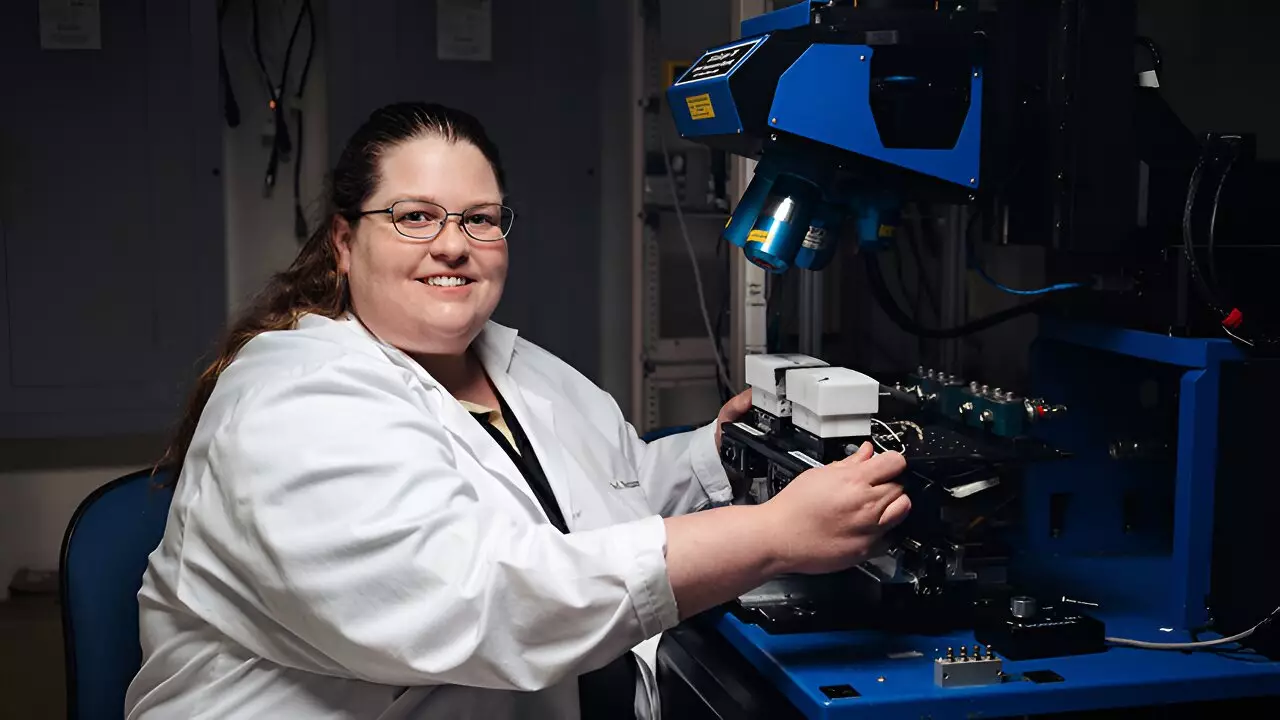In an age where technology is advancing at an unprecedented rate, the management of heat in electronic devices poses significant challenges. Every electronic component, from tiny smartphones to robust electric vehicles, generates heat that can jeopardize their functionality and lifespan. The need for efficient cooling solutions is paramount, as overheating can lead to performance issues and premature device failure. Recognizing this critical aspect, researchers like Amy Marconnet at Purdue University are exploring groundbreaking methods for thermal management aimed at improving electronic device performance.
Electronics operate within a restricted temperature range, where performance peaks and inefficiencies are minimized. When temperatures exceed this range, not only does performance degrade, but the risk of physical damage escalates. As devices increasingly incorporate advanced functionalities—particularly in compact formats—the demand for effective cooling solutions grows. Marconnet emphasizes the importance of managing heat, particularly in wearable technology, which must maintain stringent temperature controls due to direct contact with the skin.
The evolution of technology has prompted a shift toward innovative cooling techniques, particularly at the nanoscale level, where conventional solutions may be impractical. This rising complexity necessitates novel materials and approaches that go beyond traditional cooling methods.
One of the most promising avenues being explored is the use of phase change materials (PCMs) for thermal management. These materials modulate temperature by absorbing and releasing heat during phase transitions, like melting and solidifying. For instance, during high-usage scenarios—such as gaming or virtual reality sessions—PCMs can absorb excess heat when they transition from solid to liquid, thus maintaining optimal device temperatures. Conversely, when the device is inactive or recharging, these materials solidify, releasing stored heat and allowing devices to endure higher performance levels the next day.
Marconnet’s recent investigations into integrating metallic alloys as PCMs into semiconductor chips illustrate the potential of these materials. This research, led by her graduate student Meghavin Bhatasana, seeks to enhance performance while minimizing weight and manufacturing costs, essential factors in modern electronics.
Another aspect of Marconnet’s research focuses on thermal greases—substances applied between silicon chips and heat-dissipating components. These greases are critical for thermal conduction; however, they often degrade over time as they are “pumped out,” ultimately resulting in decreased performance. By developing rapid testing methods to assess the efficacy of different materials, Marconnet aims to accelerate the identification of high-performing heat transfer substances, thus streamlining the path to enhanced device longevity.
The heat generated during battery charging further complicates thermal management. As charging speeds increase—particularly for electric vehicles—so too does the thermal output from electrochemical reactions. Marconnet likens this phenomenon to the warmth emitted from incandescent bulbs. While charging is essential for energy storage, significant heat production undermines efficiency, representing wasted energy.
This challenge has led Marconnet and her colleague Xiulin Ruan to explore innovative solutions such as compressible foams designed to dissipate heat while providing insulation against cold. The intersection of thermal management with battery performance is critical, especially as electrification grows in nearly all facets of modern life.
As the demand for better thermal management continues to rise, research in this area is evolving. Marconnet’s recent work on phase change materials serves as a testament to the innovative approaches scientists are taking to manage heat in electronics more effectively. With patents filed for new technologies and research papers under review, the future of thermal management in electronic devices looks promising.
Bridging the gap between current limitations and future possibilities, researchers like Marconnet are paving the way for safer, more efficient electronics, ultimately enhancing user experience and device performance in our increasingly digital world.


Leave a Reply